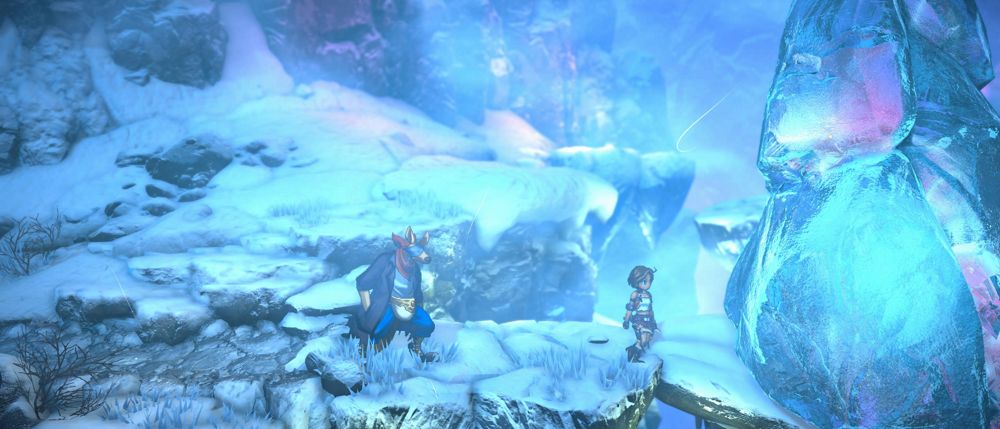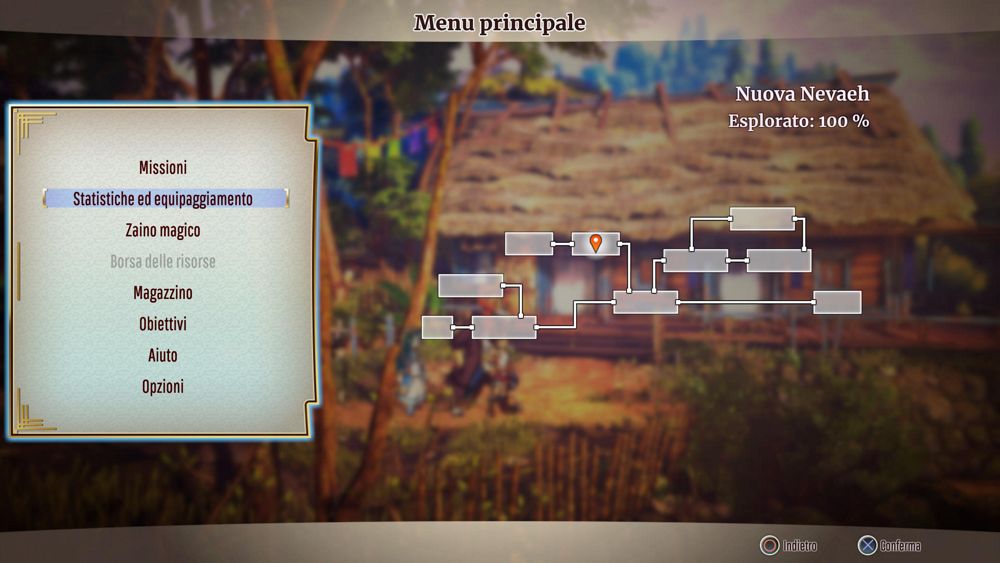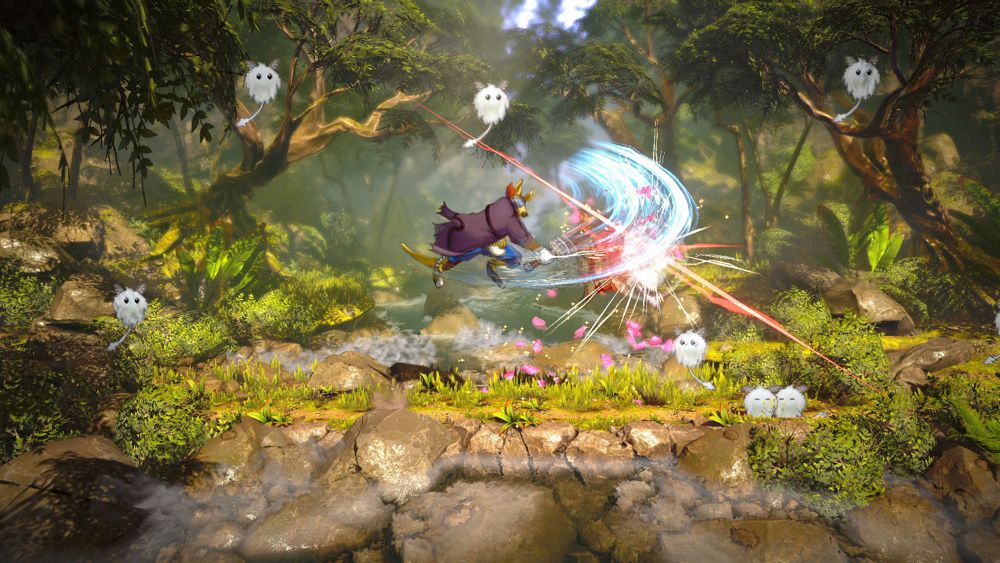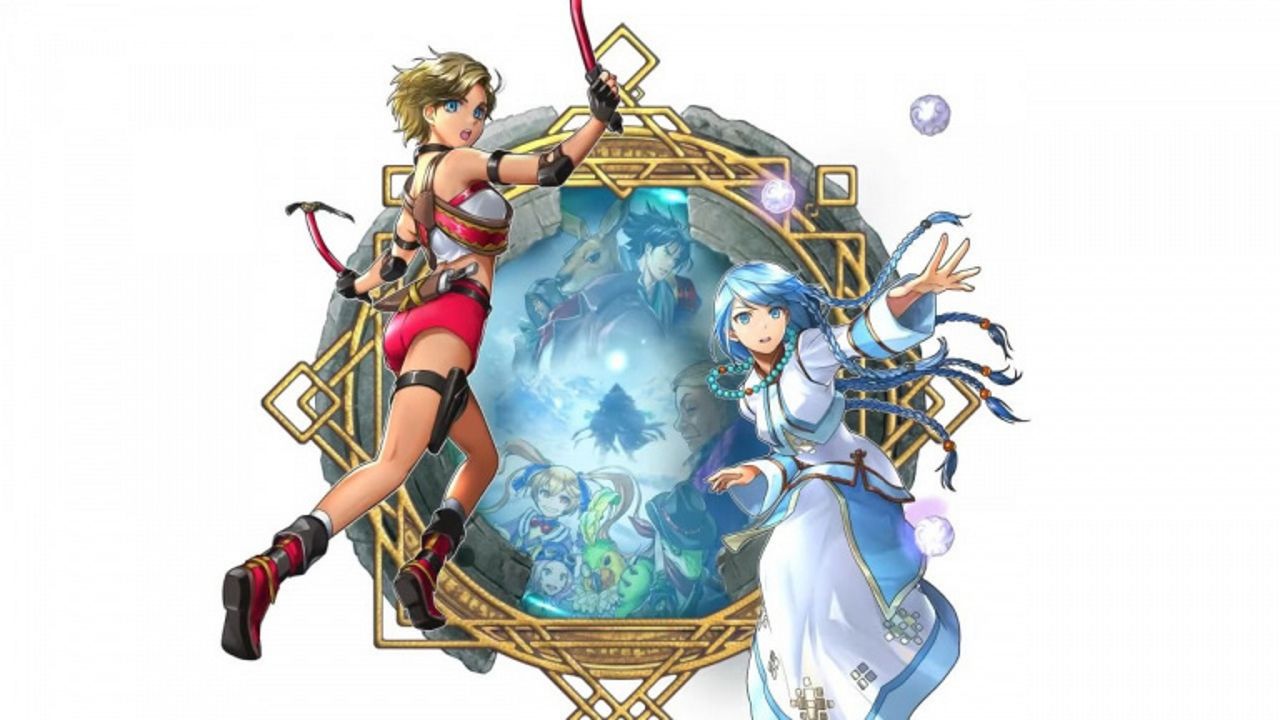Eiyuden Chronicle: Rising, which we present in this review, is a game that somewhat escapes the gender classification. Inside there are a number of elements that make it fall back into RPG category (Role-Play Game), such as character skill management. The setting and the dialogue system, then, are typical of what we commonly call JRPG (Japanese RPG). Tuttavia, Eiyuden Chronicle: Rising deviates from the classic formula of the JRPG and inserts a series of mechanics typical of action games. The result is a hybrid that, in our opinion, it works very well from a playability point of view.
The review of Eiyuden Chronicle: Rising
Eiyuden Chronicle: Rising tells the story of three characters: CJ, Garoo and Isha. The three characters have different characteristics from each other and already have a profile. These profiles refer to fairly standard archetypes: a thief / adventurer, a warrior and a wizard.
The game alternates between exploration phases and interactive combat phases. The two activities take place in clearly separated sections. There will in fact be areas of the map (the city) in which we will interact with NPCs, manage resources and receive missions and others (dungeons) in which we will fight monsters. So, we will go to a dungeon to collect resources or carry out a mission, we will return to the city to power up and receive the reward and then we will start the cycle again.
Eiyuden Chronicle: Rising is a game not particularly demanding which, however, has a specific role. It is in fact the prequel a Eiyuden Chronicle: Hundred Heroes (as also mentioned in the trailer). Eiyuden Chronicle: Hundred Heroes is the result of a successful Kickstarted project which has raised three and a half million euros and which should arrive on the market in 2023. In this sense, Eiyuden Chronicle: Rising serves to introduce some characters and give a first taste of the setting and mechanics. Not surprisingly, it is proposed on the market at a more than accessible price (a prequel price, we must say) despite being a game with a head and a tail and not, as unfortunately often happens, a paid demo.
From the technical point of view Eiyuden Chronicle: Rising is a well made game, fluid in movement and with fantastic visuals. Maybe even too beautiful because they sometimes slightly clash with the pixelart characters. Also the regionalization in Italian is well taken care of apart from a couple of smears, but it’s not worth being so fussy.
History

History it starts with CJ arriving in the village of New Neveah in search of treasures. She must bring an artifact to her clan to prove her worth as a treasure hunter. The village is home to runic ruins where many artifacts can be found. In order to access the ruins, however, CJ will have to help the villagers rebuild their houses and shops fallen following a recent earthquake. Along the way, CJ’s team will be joined by first Garoo and then Isha. Everyone has his own motives. Garoo is a mercenary and wants the profit and Isha, who is also the head of the village, is looking for his father.
During the unfolding of events the player will have to complete a series of missions. In addition to the main line there will also be a series of seemingly secondary missions. We say apparently because in fact they will be the ones who will make us rebuild the village. THE open stores will allow us to upgrade the characters. Without these upgrades, of course, we won’t be able to complete the main story.
We would like to point out, among other things, thegreat job of the level designers in designing the symbiosis between map and history. As we expand the village we see gradually more detailed and cleaned buildings as well as more NPCs to crowd the streets.
The story is quite interesting even if it turns out to be rather slow to follow. This is due to the number of missions to be carried out before seeing a twist in the narrative. Also, there are times when the missions get quite repetitive. It often happens that you have to return to an area that has already been explored and having to exterminate the monsters themselves in search of an object that could not be found before. In the meantime, however, the monsters have gotten too low-level for us and we don’t get much pleasure from retracing the map for the umpteenth time.
Fortunately, though, the game immediately provides us with a fast travel mechanism both outside and inside the dungeons to make the experience more streamlined.
The game mechanics

When we hear the term JRPG let’s immediately think of a series of fairly classic elements. For example, the movement on a map seen from the other, the refined management of the character’s skills and, above all, turn-based combat. This, of course, does not apply to all games classified as JRPG; however they are a good majority. Eiyuden Chronicle: Rising largely deviates from the standard we have just described.
First of all, movement doesn’t have two dimensions but it is purely side scrolling. From this point of view we could almost call it a platformer. Therefore, we will find ourselves with a series of horizontal corridors to go through. The passage from one corridor to another can take place either at the end of the race or in the middle, where well indicated with markers. Fast travel, on the other hand, offers us a top view of the map and a list of areas already explored to choose from.
Character management

The management of the character’s abilities is very simplified. First of all, it is not possible to act on individual values and we are not given skill points to distribute by leveling up. The equipment is fixed, in the sense that each character already has a weapon and armor; what we do is improve it by buying some upgrades as they become available in stores. As for the power-ups, however, each character more equip two accessories (without class constraints) and two elementary skills; one for offense and one for defense.
Having to be honest, we have never perceived these simplifications as a penalty. Having a simple tab facilitates the task of managing the character and allows us to focus on the story. Plus, it also spares us the tedious task of re-distributing, storing and selling weapons and armor after every single upgrade. Of course, this must be done accompanying quite tolerant combat dynamicsso you don’t have to squeeze the equipment down to the last percentage point to win.
Combat

The part that differs the most from classic JRPGs is the combat. In this game it is not turn-based but in real time with a more hack’n’slash mode. In addition, the various possible moves, such as the double jump, the loaded shot and the parry are linked to the evolution of the equipment and not to that of the character.
During the combat phases the active character is always one. However, we can change it quickly by pressing a key in such a way take advantage of the different characteristics of mobility and attack. Garoo moves slowly but does more damage, Isha is quite weak but can attack from a distance and CJ has a medium attack but great mobility.
When we have more than one character in the group we can combine attacks into a combo by switching characters between hits. This mechanic, while interesting and functional, has however left us a little perplexed. There are two ways to activate the combos: manually and automatically. In a manual way you have more control of the characters in use but you need good timing for the changeso it is relatively more difficult to do a lot of damage. In an automatic way, however, the change of character always comes at the right time and we maximize the damage. Too bad, however, that the automatic change takes place even when we do not expect it, so we often find ourselves with the wrong character with respect to the melee position and we suffer damage that could have been avoided. Using natural mode is not a problem, but we expected a little more refined automatic control.
The only real criticism: the (non) difficulty
We often complain that a game is too difficult to play. It almost never happens that you complain about a game because it is too easy and therefore does not represent a significant challenge.
Nel caso di Eiyuden Chronicle: Rising there is no possibility to select the difficulty level and, in our case, we did 23 levels with the characters before we needed to load a save. While taking into account the different sensitivity that each of us has, let’s say that it could be an indicator of a rather simple challenge.
In reality there is also a difficult mode, only it is given to us as a reward. In fact, once the main story is complete, when we are in our base there will be a new option in the menu to allow us to change the difficulty between normal and hard. This is obviously meant to favor the re-playability of the title, but we can’t get an idea of how effective it can actually be.
However, we would like to comment that, despite the low level of challenge, the game keeps us busy no less than 10/15 hours. Given the prequel price at which it is offered, the ratio between money spent and hours played is still more than acceptable.













Leave a Reply
View Comments